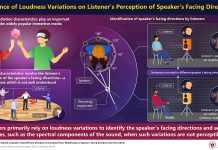
Quantum computers are special types of computers that use the principles of quantum physics to perform tasks. These machines are so powerful that they could eventually outdo regular computers in many ways.
For example, they could help solve really tough problems faster, find new medicines quickly, and offer better protection from cyber-attacks.
However, despite their potential, quantum computers are currently available to only a few people across the globe. Most of us can’t just walk into a store and buy one or find one in our workplace.
To make these computers more accessible, scientists have been thinking about using the internet to let people use quantum computers stored in remote locations, a bit like how cloud storage works for our files and photos.
This idea of using quantum computers over the internet, or “cloud-based” quantum computing, could really change things by making these powerful tools available to everyone. However, there’s a catch.
If not handled properly, it could lead to privacy and security issues, such as someone sneaking a peek at what you’re doing or stealing your information.
To tackle this problem, researchers at the University of Oxford have been working on a clever method called “blind quantum computing.”
This technique lets a user run calculations on a quantum computer without the computer itself knowing what the calculations are or the information involved. This way, even if someone controls the quantum computer, they can’t see the user’s data or what they’re doing with it.
Gabriel Araneda and his team at Oxford, known for creating advanced quantum networks, have recently made some impressive progress. They’ve successfully tested a new way to ensure that when you use a quantum computer through the cloud, it’s both safe and private.
This involves a complex dance of quantum physics where the user keeps all their information hidden, yet can still check if the computer’s answers are correct.
The technology they’re developing uses what’s called an “ion trap quantum processor.” This is a device that uses charged atoms to perform calculations. These atoms are linked up through a special kind of light beam sent over optical fibers, similar to how some internet connections work.
Here’s how it works in simple terms: The quantum computer does the heavy lifting by performing calculations with the atoms. Meanwhile, the user, who could be sitting at home, uses a simple device to interact with the quantum computer.
This device checks the light from the quantum computer to make sure everything is going correctly, without revealing any secrets about the user’s data or what they’re calculating.
This new approach is a big deal because it solves some of the major challenges of using quantum computers through the cloud. It ensures that the computer only knows what it needs to perform tasks without ever accessing the sensitive details.
This is not just a theoretical idea anymore; the Oxford team has shown that it can work in real-world conditions.
Their success might soon lead to more people being able to use quantum computing safely and privately. This could open up new possibilities in various fields like medicine, economics, and security.
What’s exciting is that this technology could bring the immense power of quantum computers to our fingertips, revolutionizing how we solve problems and understand the world.
As the field of quantum computing continues to grow, we can expect more innovations like this, making these advanced technologies more usable and beneficial for everyone.
The researchers are hopeful that this is just the beginning and plan to expand their experiments to handle larger tasks and possibly even connect more users to their secure quantum network.
The research findings can be found in Physical Review Letters.
Copyright © 2024 Knowridge Science Report. All rights reserved.



